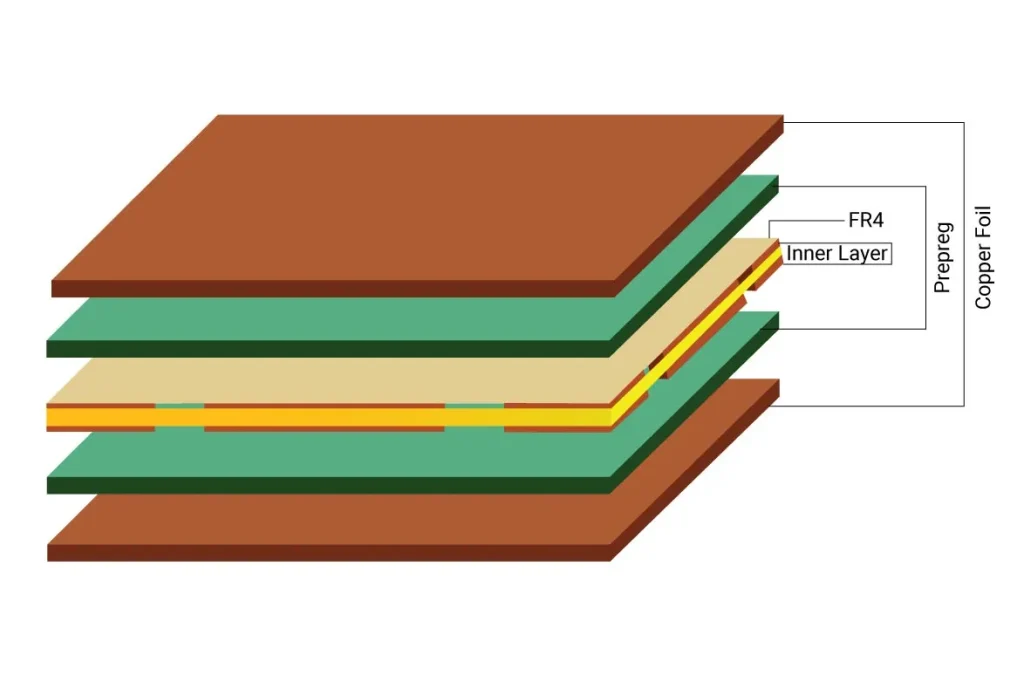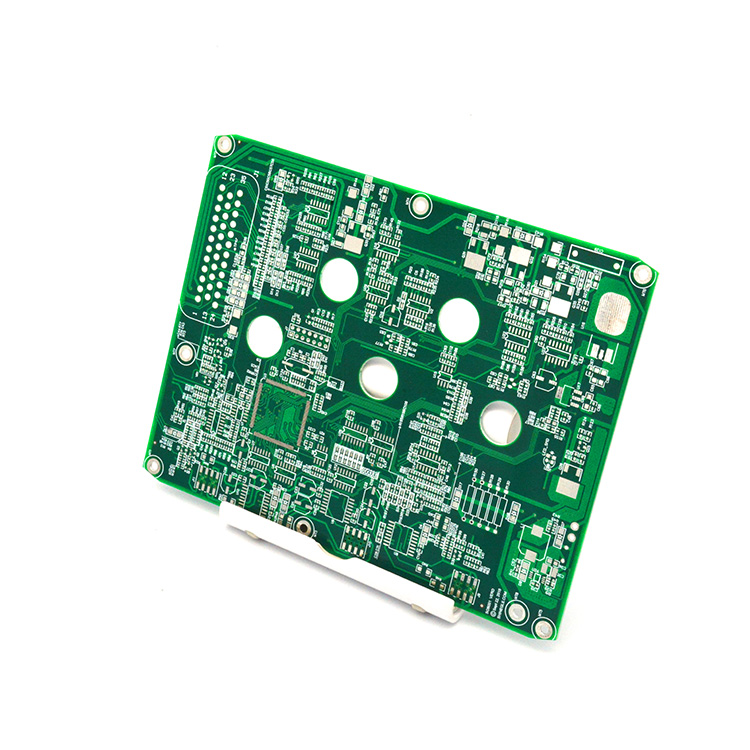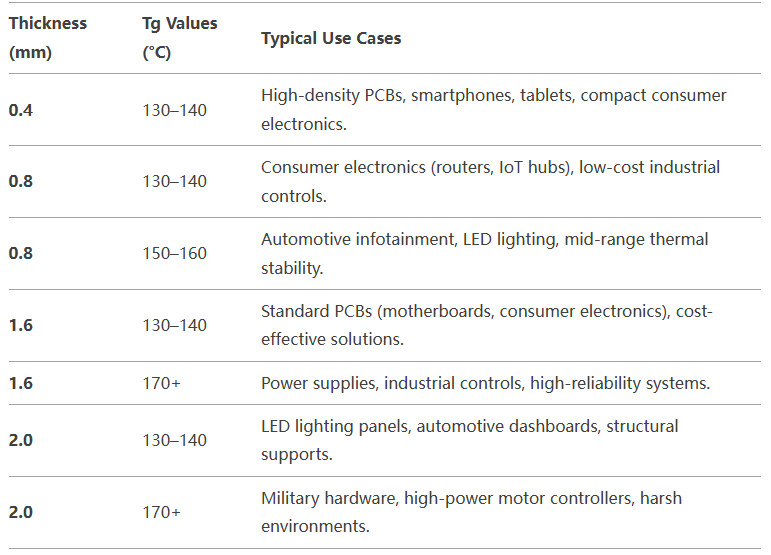FR4 is the backbone of modern printed circuit board (PCB) manufacturing, celebrated for its reliability, versatility, and affordability. For engineers designing electronic devices, understanding FR4's properties and applications is essential to creating high-performing, cost-effective PCBs. In this blog post, we'll dive into what makes FR4 the go-to material, explore its advantages, and highlight where it shines—and where it doesn't—in PCB applications.
Whether you're prototyping a new design or scaling up production, knowing the ins and outs of FR4 can make all the difference. Let's break it down step-by-step, offering practical insights and technical details to guide your next PCB project.
What is FR4 Material?
FR4 is a composite material made from woven fiberglass cloth impregnated with an epoxy resin. The "FR" stands for "Flame Retardant," and the "4" classifies it within a series of flame-retardant materials, adhering to the UL94V-0 standard. This standard ensures the material resists combustion and self-extinguishes if exposed to flames—a critical feature for electronics safety.
Widely regarded as the industry standard for PCB substrates, FR4 combines physical durability, electrical insulation, and thermal stability. Its widespread use stems from decades of proven performance, making it a trusted choice for engineers across industries.
Properties of FR4 Material
FR4's popularity comes from its well-balanced properties. Below, we'll explore its physical, electrical, and thermal characteristics, complete with specific data to help you evaluate its suitability for your designs.
Physical Properties
- Density: FR4 has a density of 1.7 to 1.9 g/cm³, striking a balance between lightweight design and mechanical strength.
- Strength-to-Weight Ratio: The woven fiberglass reinforcement gives FR4 exceptional durability without adding unnecessary weight, ideal for compact electronics.
- Moisture Resistance: With a moisture absorption rate of about 0.10% (after 24 hours in water), FR4 maintains its integrity in humid conditions, protecting both electrical and mechanical performance.
Electrical Properties
- Dielectric Constant (Dk): FR4's Dk ranges from 3.8 to 4.8, influenced by glass weave, thickness, and resin content. This value affects signal propagation and impedance control—key considerations for high-speed circuits.
- Dissipation Factor (Df): The Df increases with frequency, typically around 0.02 at 1 MHz, leading to signal losses in high-frequency applications. For most standard designs, however, this is manageable.
- Dielectric Strength: At approximately 20 kV/mm, FR4 provides robust insulation between conductive layers, reducing the risk of short circuits.
Thermal Properties
- Glass Transition Temperature (Tg): Standard FR4 has a Tg of 130°C to 140°C, marking the point where it shifts from rigid to flexible. High-Tg options (up to 170°C or more) are available for heat-intensive applications.
- Coefficient of Thermal Expansion (CTE): FR4's CTE is 14-18 ppm/°C in the X and Y directions and 70-100 ppm/°C in the Z direction. This governs how it expands or contracts with temperature changes, impacting long-term reliability.
- Flame Retardancy: Meeting UL94V-0, FR4 ensures safety by resisting fire propagation—a must for consumer and industrial electronics.

Advantages of FR4 Material
FR4 dominates PCB manufacturing for good reason. Here are its standout benefits:
- Cost-Effectiveness: Compared to advanced materials like Rogers or PTFE, FR4 offers unbeatable value, keeping project budgets in check.
- Reliability: Decades of use have made FR4's behavior predictable, reducing design risks and ensuring consistent performance.
- Versatility: From single-layer boards to complex multilayer designs, FR4 adapts to diverse manufacturing needs.
- Availability: With a global supply chain, FR4 is readily accessible, minimizing procurement delays.
- Ease of Fabrication: FR4's compatibility with standard processes—drilling, etching, and laminating—streamlines production.
These advantages make FR4 the default choice for most PCB applications, balancing performance with practicality.
Applications of FR4 Material
FR4's versatility shines across industries. Here's where you'll find it in action:
- Consumer Electronics: Powering smartphones, laptops, and TVs with reliable, affordable PCBs.
- Automotive: Supporting engine control units, sensors, and infotainment systems under varying conditions.
- Telecommunications: Enabling routers, switches, and base stations with stable electrical performance.
- Industrial Controls: Driving automation systems, power supplies, and instrumentation in rugged environments.
- Medical Devices: Backing diagnostic tools and monitoring equipment with precision and safety.

Limitations of FR4 Material
FR4 isn't a one-size-fits-all solution. Engineers should be aware of its constraints:
- High-Frequency Performance: At frequencies above 1 GHz, FR4's Dk (3.8-4.8) and Df (0.02) can cause signal attenuation and impedance mismatches. High-frequency laminates like Rogers 4350 (Dk ~3.5, Df ~0.004) often outperform it here.
- Thermal Limits: Standard FR4's Tg of 130°C-140°C may not suffice for extreme heat; high-Tg FR4 or polyimide (Tg ~250°C) may be required.
- Rigidity: FR4 lacks flexibility, making it unsuitable for flexible or rigid-flex PCBs—polyimide or polyester films are better alternatives.
Understanding these limits helps engineers decide when FR4 fits and when to explore other materials.
Choosing the Right FR4 Material
Selecting FR4 involves tailoring it to your design's needs. Consider these factors:
- Thickness: Options like 0.8mm, 1.6mm, or 2.0mm affect mechanical strength and flexibility. Thinner boards suit compact designs; thicker ones enhance durability.
- Tg Value: Standard Tg (130°C-140°C) works for most applications, but high-Tg FR4 (170°C+) is better for lead-free soldering or high-heat environments.
- Copper Weight: Common weights—1 oz (35μm) or 2 oz (70μm)—impact current capacity and heat dissipation. Choose based on power requirements.
For example, a 1.6mm FR4 board with 1 oz copper and a Tg of 140°C is a solid pick for a consumer gadget, while a high-Tg, 2 oz variant suits an automotive control unit.

Suggested Reading: The Ultimate Guide to Choosing the Right FR-4 Material for Your PCB Fabrication Project
ALLPCB's Role in FR4 PCB Manufacturing
At ALLPCB, we recognize FR4's critical role in PCB success. Our advanced manufacturing capabilities and quick-turn prototyping services deliver high-quality FR4 PCBs fast, whether you're testing a concept or launching production. With our global logistics network, we ensure seamless delivery to engineers worldwide, supporting your projects with precision and efficiency.
Conclusion
FR4 remains the cornerstone of PCB manufacturing, blending cost, reliability, and versatility into a material that meets most engineering needs. Its properties—spanning mechanical strength, electrical insulation, and thermal stability—make it ideal for applications from consumer gadgets to industrial systems. While it has limitations in high-frequency or extreme-temperature scenarios, knowing when to use FR4 (or switch to alternatives) is key to optimizing your designs.
By leveraging FR4's strengths and partnering with a trusted manufacturer like ALLPCB, you can bring your PCB projects to life with confidence. Ready to start? We're here to help you every step of the way.
 ALLPCB
ALLPCB








